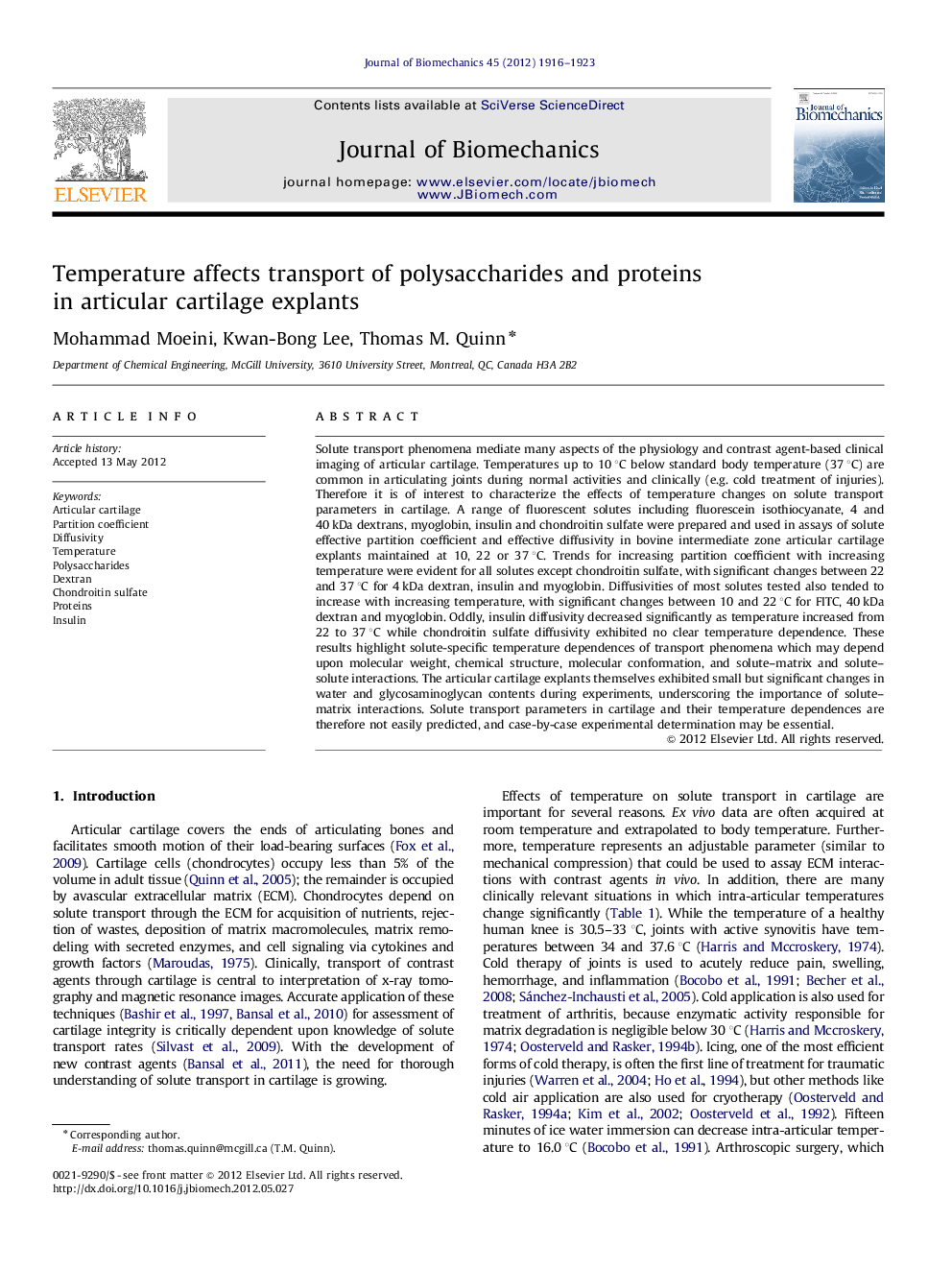| کد مقاله | کد نشریه | سال انتشار | مقاله انگلیسی | نسخه تمام متن |
|---|---|---|---|---|
| 872762 | 910281 | 2012 | 8 صفحه PDF | دانلود رایگان |

Solute transport phenomena mediate many aspects of the physiology and contrast agent-based clinical imaging of articular cartilage. Temperatures up to 10 °C below standard body temperature (37 °C) are common in articulating joints during normal activities and clinically (e.g. cold treatment of injuries). Therefore it is of interest to characterize the effects of temperature changes on solute transport parameters in cartilage. A range of fluorescent solutes including fluorescein isothiocyanate, 4 and 40 kDa dextrans, myoglobin, insulin and chondroitin sulfate were prepared and used in assays of solute effective partition coefficient and effective diffusivity in bovine intermediate zone articular cartilage explants maintained at 10, 22 or 37 °C. Trends for increasing partition coefficient with increasing temperature were evident for all solutes except chondroitin sulfate, with significant changes between 22 and 37 °C for 4 kDa dextran, insulin and myoglobin. Diffusivities of most solutes tested also tended to increase with increasing temperature, with significant changes between 10 and 22 °C for FITC, 40 kDa dextran and myoglobin. Oddly, insulin diffusivity decreased significantly as temperature increased from 22 to 37 °C while chondroitin sulfate diffusivity exhibited no clear temperature dependence. These results highlight solute-specific temperature dependences of transport phenomena which may depend upon molecular weight, chemical structure, molecular conformation, and solute–matrix and solute–solute interactions. The articular cartilage explants themselves exhibited small but significant changes in water and glycosaminoglycan contents during experiments, underscoring the importance of solute–matrix interactions. Solute transport parameters in cartilage and their temperature dependences are therefore not easily predicted, and case-by-case experimental determination may be essential.
Journal: Journal of Biomechanics - Volume 45, Issue 11, 26 July 2012, Pages 1916–1923